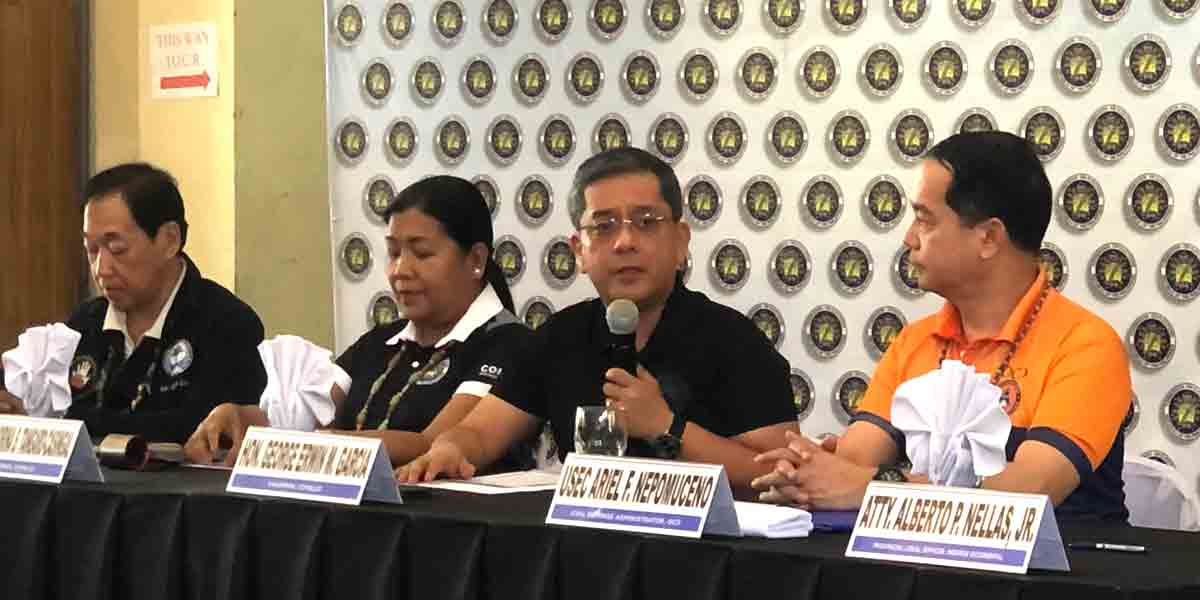By Elyssa Lopez
Philippine Center for Investigative Journalism

In a small corner on the third floor of Araneta Square Mall in Caloocan City lies an unlikely government office: a barangay.
Barangay 76 is the smallest barangay in the Philippines with only two registered residents, according to the Philippine Statistics Authority.
And the two registered residents do not include the barangay chairman and seven councilors. The chairman, Adelino Fausto, is a resident of the neighboring town of Malabon.
The councilors live in Caloocan’s Barangays 72 and 78.

Fausto and four of the seven sitting councilors are seeking reelection in the barangay and Sangguniang Kabataan elections on Monday, October 30.
The barangay has 210 registered voters, according to data from the Commission on Elections.
Under Batas Pambansa 222, barangay officials must be “an actual resident of the barangay for at least six months immediately preceding the election.”
How are they able to hold these positions even if they’re no longer residents of Barangay 76?
PCIJ tried to get in touch with Comelec officials to explain how the officials continued to hold office in the barangay, but has not received a response as of writing.
Fausto, who has been an official of Barangay 76 since 1988, is running unopposed in his reelection bid. After completing this term – his fifth – he plans to run for councilor in the same barangay.
Barangay 76 has a land area of 28,000 square meters or 2.8 hectares. It is home to two malls and a bus terminal. When PCIJ visited the barangay, there were neither houses nor urban settlements in sight.
If there are no residents in the barangay, then who are Fausto’s constituents?
“Ang usual kong botante ay yung may ari ng mga stalls, at mga sales lady. (The regular voters are the stall owners and salesladies),” he said.
PCIJ spent an afternoon in Barangay 76 to look for voters in the area. But this reporter could not find any, even after interviewing more than a dozen salesladies, stall owners, and even shoppers within the vicinity.

A saleslady in one of the stalls at Puregold Monumento, who asked not to be named, said she used to vote in Barangay 76.
“Lumipat na po ako kaya sa Valenzuela [City] na ako naka-register (I transferred residence and registered in Valenzuela),’’ she said.
“Pero dati, diyan ako sa [barangay] 76. May stall kami diyan tapos sinabihan kami nang taga barangay na sa barangay na lang kami magrehistro kasi sa Bicol pa ako nakarehistro nun (I used to man a stall there in Barangay 76. We were advised by someone from the barangay to register there as a voter because back then I was a registered voter in Bicol).”
When she filled out the registration form, she wrote down the stall’s address as her address. “Hindi ko rin nga alam kung pwede yun, eh (I didn’t even know if that was allowed).”
Under Republic Act 8189, a citizen may only register as a voter in a barangay if he or she can provide an “exact address with the name of the street and house number for location in the precinct maps maintained by the local office of Comelec.”
The voters in Barangay 76 may have been “former residents who never registered in their new barangays,’’ a Commission on Elections (Comelec) representative in the city’s second district told PCIJ.
Barangay 76 lies in the middle of a commercial center. It wasn’t so a few decades ago.
Up until the 1990s, there were more than 3,000 residents, mostly informal settlers occupying private property. But they were forced to move out after the property was sold to businesses, Fausto said.
Caloocan’s barangay secretariat is aware that there are only a few residents left in Barangay 76.
“The city is already looking at merging the barangay with Barangay 72, which also has a small population,” said Veronica Buenviaje, officer in charge of the barangay secretariat. She could not provide any definite timelines, however, as to when it would be done.
According to the Local Government Code, a barangay may be divided, merged, abolished, or its boundary substantially altered by law or by an ordinance. But a majority win in a plebiscite with residents as voters must be conducted.
Barangay 76 receives an annual tax allotment of P1.2 million.
Fausto said the barangay also benefits from the tax collected from businesses in the area. Without any residents in the area, his barangay’s work has then been mainly focused on security.
“Maraming mandurukot diyan sa may Monumento, sa tapat ng mall. So nagiinstall kami ng mga CCTV, kaso sinusungkit naman nila (Monumento crawls with snatchers, particularly in front of the mall. We install CCTVs, but these are stolen),” he said.
Fausto has been running the barangay from the mall “at least since 2004’’ on a P10,000 monthly rent. Its earlier office was demolished by the Metro Manila Development Authority (MMDA).




















